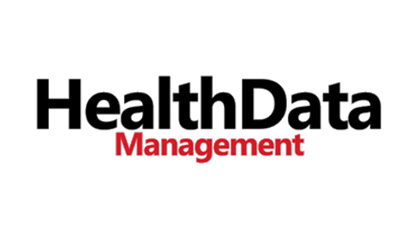Healthcare Strategies Podcast: Turning Non Medical Drivers of Health Data into Action
BizTV Texas interview with Steve Miff: How PCCI is helping the under-served in our community
PCCI CEO Steve Miff was recently interviewed by BizTV Texas. On the show, All In With Bryan Weatherford, Dr. Miff explained how PCCI is playing a critical role in leveraging data science, expert clinicians and Non Medical Drivers of Health to better respond to the under-served in our community. Please click on the video below to see the segment:
DCEO Healthcare: The Predictive Model Preventing Adverse Drug Events and Saving Millions
HIT Consultant: Parkland Hospital Saves $17M With PCCI’s AI-Powered Predictive Model
Mobile Health Times: PCCI’s predictive model helps prevent in-hospital adverse drug events
PCCI’s predictive model helps prevent adverse drug events
DALLAS – Parkland Center for Clinical Innovation (PCCI), which improves healthcare for vulnerable populations with advanced data science and clinical expertise, has developed a predictive model that in two years has helped prevent more than 2,000 adverse drug events (ADEs) for hospitalized patients, delivering a potential savings of over $17 million by reducing re-admissions and eliminating ADEs.
The program, Patients at Risk for Adverse Drug Events (PARADE), is a partnership between PCCI and Parkland Health & Hospital System. During the two years of implementation, PARADE has demonstrated positive results combating ADEs, a problem that impacts more than 450,000 patients nationwide and increases the risk for re-admissions, lengthens the stay of patients by two to three days and adds almost $4 billion in extra hospital costs annually. The most common drug classes associated with ADEs include anticoagulants, diabetes medications, and opioids.
PARADE screens all adult patients at the point of hospitalization and flags high risk individuals who can benefit from pharmacist intervention. To score a patient’s level of risk, PARADE captures a patient’s medical history, including medications and disease complexity, prior healthcare utilization, demographics and Non Medical Drivers of Health. It then provides results in real-time, with seamless integration into a patient’s electronic health record (EHR).
During its two years of implementation at Parkland, the PARADE program has screened more than 87,000 patients, with 8,731 high-risk patients identified. Of the high-risk patients, 16 percent received timely pharmacy intervention and more than 2,000 adverse drug events were prevented. For high-risk patients receiving a consult, the 30-day readmission rate was cut by 23.5 percent.
“Close collaboration with Parkland’s front-line pharmacy team from idea to implementation has been critical for the success of PARADE,” said Manjula Julka, MD, PCCI’s Vice President, Clinical Innovation. “PARADE has proven to improve quality of care by helping the pharmacy team to identify and intervene with high risk patients within 24 to 48 hours of admission. Upwards of 50 percent of ADEs are detectable and preventable and PARADE gives us a potent tool to help hospitals stay ahead of a difficult problem that causes longer stays and drives significant costs for hospitals.”
Kristin Alvarez, PharmD, BCPS, Associate Director Clinical Advancement/Best Practices for Parkland and Brett Moran, MD, Chief Medical Informatics Officer for Parkland, led implementation of PARADE at Parkland. Due to the model’s high accuracy and real-time user-friendly information, Parkland has adopted PARADE as a primary tool for pharmacist daily workflow for consult identification with demonstrated impact on preventing potential ADEs.
About Parkland Center for Clinical Innovation
Parkland Center for Clinical Innovation (PCCI) is an independent, not-for-profit, healthcare intelligence organization affiliated with Parkland Health & Hospital System. PCCI focuses on creating connected communities through data science and cutting-edge technologies like machine learning. PCCI combines extensive clinical expertise with advanced analytics and artificial intelligence to enable the delivery of patient-centric precision medicine at the point of care.
###
Health Data Management’s story on PCCI’s successes with preventing preterm births
Healthcare IT News Interview with Steve Miff on reducing pre-term births
In The News: PCCI collaborates with mental health services coalition in Gregg County, Texas
PCCI’s collaboration with a healthcare services coalition in Gregg County designed to improve support for mental health in the region was highlighted in the Longview News-Journal. Click the headline below to see the full article:
Gregg County collaborative designed to funnel mentally ill from hospital ERs
The Parkland Center for Clinical Innovation is a Dallas-based collaborative team of data scientists and healthcare professionals who use data and Non Medical Drivers of Health to better support under-served communities, and it has agreed to help with data analysis, Williams said.

















